Children's books are a wonderful way to start conversations about important topics. The picture books on this list teach inclusion, anti-racism and promote an anti-bias attitude.
They help teach children the value of embracing and respecting differences among people as well as show them there is great joy in living in a diverse community. Kids will also learn to recognize, rather than ignore those differences, which better equips them to work towards justice for all.
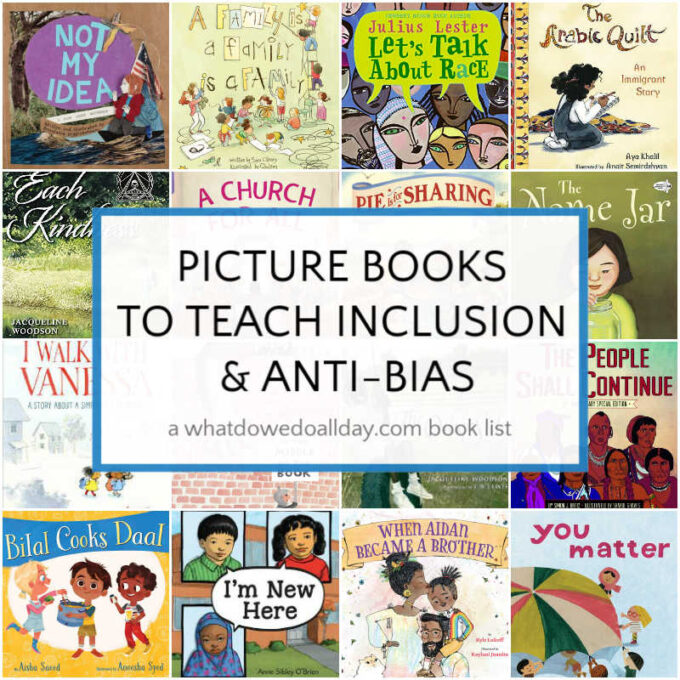
If you are searching for books for older kids, these middle grade novels that address racial injustice are excellent choices.
Note: this list contains Amazon and Bookshop affiliate links. Purchases made through these links may earn a commission for this blog. Bookshop also supports independent bookstores.
Anti-Bias Picture Books for Children
A note on ages. I've only included an age recommendation, when I think it is particularly useful. Otherwise the books are accessible for anyone ages 3 and up, but best for ages 4 and up.

Not My Idea: A Book about Whiteness by Anastasia Higginbotham
Okay, white folks, if you are really serious about teaching your kids to be anti-racist, this book is for you. It spells it out and treats kids with the respect they deserve. Kids see things, they know things and trying to hide the way power structures operate from them is insulting. If we want to foster an anti-bias attitude, we must first recognize our own biases. Higginbotham's essential book helps kids understand the concept of privilege, how it affects them, and offers hope that they have the ability to change it. You can watch this video of Jim Jimerson reading the book and offering up some good commentary for children. Ages 5 and up.
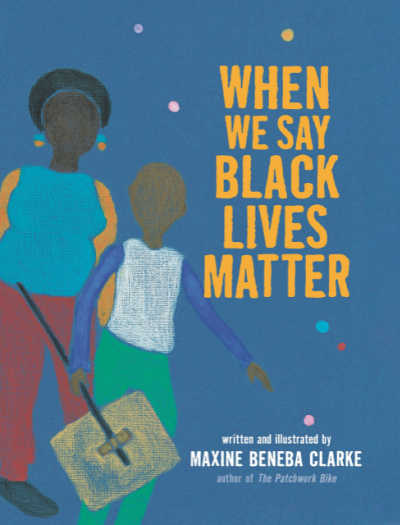
When We Say Black Lives Matter by Maxine Beneba Clarke
Every child should hear this important book read aloud. Luminous artwork and text by Afro-Carribian Australian author Maxine Beneba Clarke holds the reader captive. The narrative begins with the birth of a child and explains how the expression Black Lives Matters lifts up the community and are words of strength and comfort but also sorrow and anger and hope for change.
MORE: Picture books about standing up for others
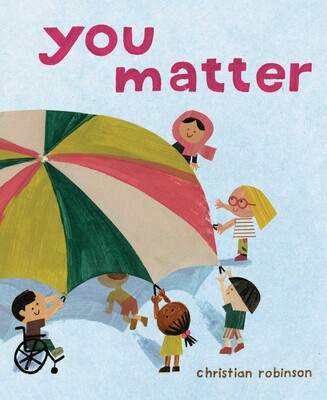
You Matter by Christian Robinson
Robinson's new book encourages children to value themselves. If kids value themselves, they are better set up to value others. Robinson's delightful illustrations depict kids from all walks of life and his simple but powerful text is accessible by all. Truly a wonderful book that belongs in every home, library and classroom. Go ahead and watch Robinson read his book on YouTube here.
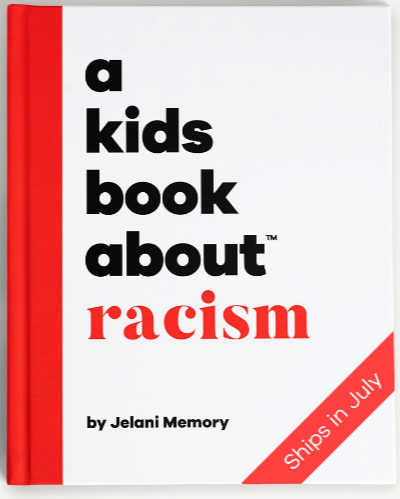
A Kids Book About Racism by Jelani Memory
Memory's book features minimal presentation gets straight to the point. He effectively communicates simple truths about racism in a way that is accessible for young children and will start important conversations. There are no illustrations, but the simple black and white text is powerful and as Memory states at the start, "This book is best read together, grownup and kid."
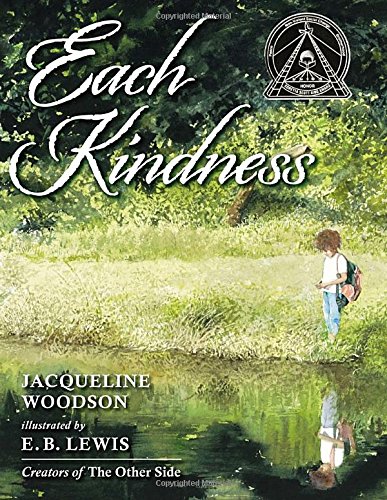
Each Kindness by Jacqueline Woodson, illustrated by E.B. Lewis
New girl, Maya, finds herself alone at school. Her obvious poverty sets her apart and the other children reject her overtures of friendship, giving into their own biases. Another girl, Chloe, narrates the action and the way the other children reject Maya, including her own admission, “She’s not my friend.” One day, their teacher drops a stone into a bowl of water to demonstrate how powerful the ripples from a single act of kindness can be. “Even small things count,” she says. Chloe decides that the next day she will be kind to Maya, but Maya never returns to school and Chloe regrets that she never grabbed her chance to do the right thing, an important lesson. This book could so easily sink into the depressing and didactic, but Woodson’s beautiful text elevates the story into a moving reminder to show kindness every chance we get. Ages 5 and up.
MORE: Books about Poverty, Hunger and Homelessness
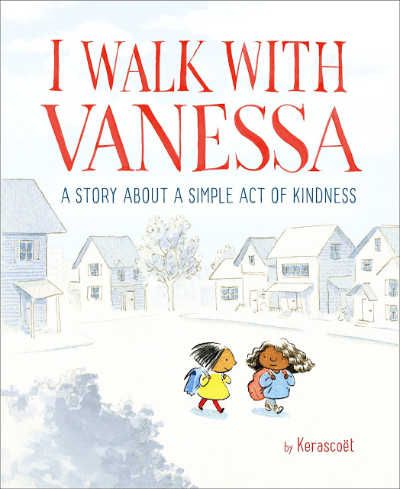
I Walk with Vanessa by Kerascoët
This lovely title is a wordless book about the power of kindness and its role in creating friendships. New girl, Vanessa, is being bullied by a schoolmate. Another girl sees this happen and after some thought decides to walk with Vanessa to school. Soon they are joined by others and the bully retreats. I love how this simple book can start an important conversation about how being the first person to do the right thing can help others to find the courage to follow.
MORE: Picture Books about Kindness
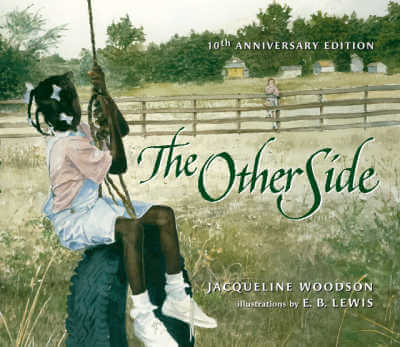
The Other Side by Jacqueline Woodson, illustrated by E.B. Lewis
A fence, both metaphorical and physical, defines the boundary between Annie’s white family and Clover’s black one. Clover’s mom has told her not to cross the fence because it is unsafe. Instead, Clover sits on the fence, watching the other girl play. Annie eventually approaches Clover and the two sides begin talking, a friendship is formed and the fence, finally crossed. The final image of a line of girls sitting on the fence points to the possibilities of the future.
MORE: Picture books by Black authors
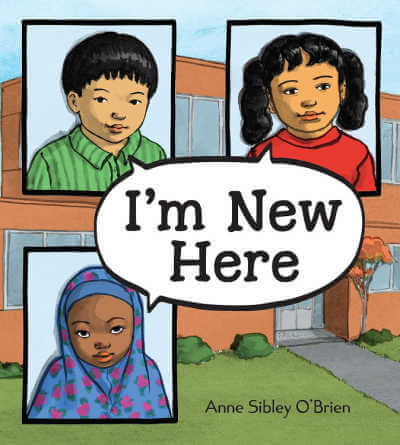
I'm New Here by Anne Sibley O'Brien
Every child knows what it is like to walk into a room and not know anyone. Compound that with not being able to speak the language, or not being familiar with the culture and it can lead to some anxiety indeed and a real fear of not being included. Three children—from Guatemala, Korea, and Somalia—tell their stories of what it is like to be the new kid from a distant land. I'm so delighted that now there is a second book, Someone New, that tells the stories from the "old" students' points of view!
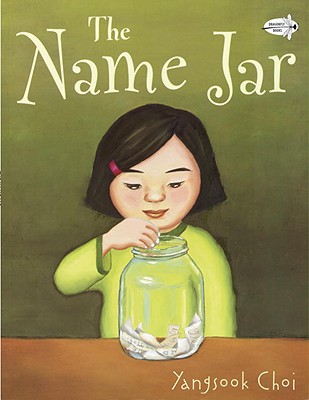
The Name Jar by Yangsook Choi
Unhei has just moved to America from Korea. She loves her name but when the other kids can’t pronounce it, she worries about fitting in. She decides she should choose a new American name. Her classmates fill up a jar with potential new names but with the support of others, Unhei decides she wants to keep her Korean name. This anti-bias book is so important, especially in classrooms in which children may have names that are difficult for native-English speakers to say. Names are a big part of a person’s identity and we serve children well by valuing them.
MORE: Diverse back to school picture books to make all children feel welcome
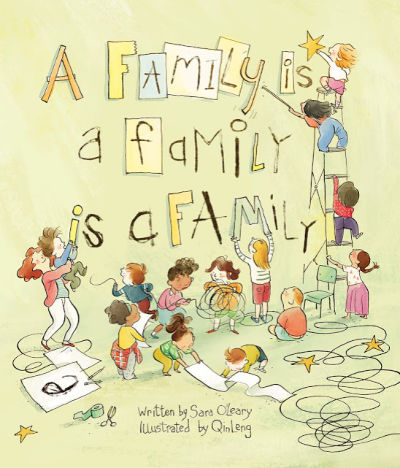
A Family Is a Family Is a Family by Sara O'Leary, illustrated by Qin Leng
In a classroom full of diverse students, a teacher asks the children to describe their families. They are all different. Some have a mom and dad, another lives with their grandparent, another has divorced parents, another step-siblings. There are LGBTQ families, disabled parents, foster families and more. The narrator is a child listening to all of the descriptions and realizes that all families are special because they are made up of people who love each other.
MORE: Books about all kinds of families

The Wall in the Middle of the Book by Jon Agee
Are walls really all they are cracked up to be? You might think one side is safer than the other, but is it really? A small knight is convinced that danger lurks on the other side of a large wall. Even as the knight is increasingly imperiled by rising threats on his side of the wall from which his armor won't protect him, he refuses to see the truth. Fortunately for him, the inhabitants on the other side of the wall are not so blind This timely picture book speaks volumes about our perceptions about safety, isolation and trusting others.
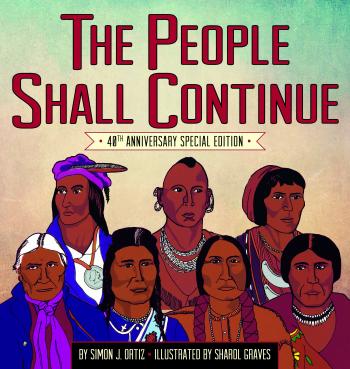
The People Shall Continue by Simon J. Ortiz, illustrated by Sharol Graves
Beginning with Creation and following through to the usurpation of their lands, Ortiz has crafted a powerful and accessible history of Native Americans. It is also a story of survival and the importance of community. A must read for everyone. Ages 7 and up
MORE: Picture books by Native American and Indigenous Authors
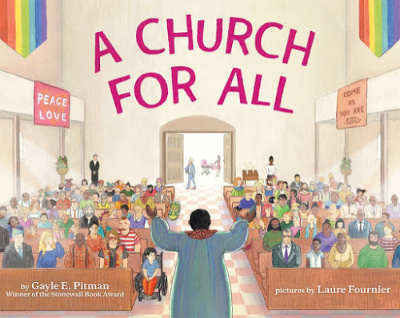
A Church for All by Gayle E. Pitman
It saddens me that so many people still use religion as a way to discriminate agains others, especially against the LGBTQ community. This book, with it's spare and simple text tosses that excuse for discrimination to the dustbin. The illustrations depict people of all shapes, sizes, colors and orientations joyfully going to church. Inside, the church is decorated with rainbow flags and banners proclaiming the message that God loves all, and all are welcome in His house.
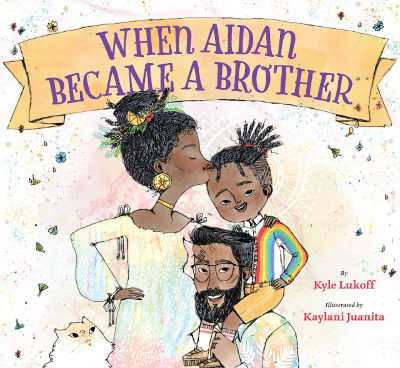
When Aidan Became a Brother by Kyle Lukoff, illustrated by Kaylani Juanita
This is such a sweet story and perfect for siblings, both cisgender and non-cisgender. When Aidan was born, everyone thought he was a girl but when he realized he was a transgender boy his accepting and loving parents changed the things that needed changing so he could live his best life. Now Aidan is about to become a brother and he wants to make sure everything is perfect for his sibling, just like everything is now perfect for him.
MORE: Picture books with LGBTQIA+ characters

Pie is for Sharing by Stephanie Parsley Ledyard, illustrated by Jason Chin
I'm not super into books that uncritically fawn over any particular nation and most patriotic books aren't really my style, but I love this charming picture book. With its diverse cast and theme promoting the joys of sharing, it is the perfect read aloud for Independence Day. Welcoming and sharing with others no matter where they are from is an American tradition and can't be emphasized enough. You could say it's as American as apple pie (wink).
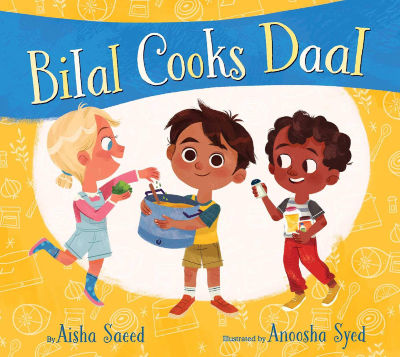
Bilal Cooks Daal by Aisha Saeed, illustrated by Anoosha Syed
I adore this picture book even more than I enjoy a delicious bowl of daal. Bilal is so excited to make daal with his dad! Food has a way of bringing people together, right? He explains to his diverse group of friends that the slow-cooked lentil dish takes lots of patience as well as lots of yummy ingredients. His friends have never tried it and they join him in the anticipation of eating the deliciousness.
MORE: Books with South Asian and Indian Characters
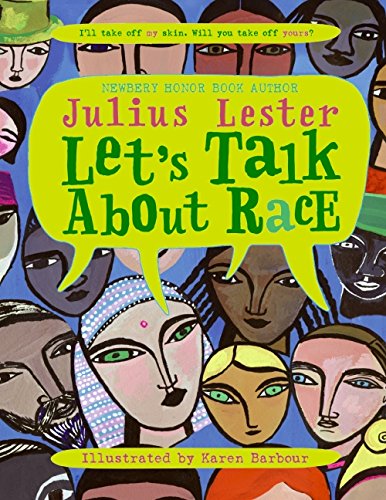
Let's Talk About Race by Julius Lester, illustrated by Karen Barbour
The title says it all. This book focuses on helping kids tell their own story and including their race as an integral, but only one part of their personal history. The narrative asks kids to think about how people are the same, as well as how they are different. This is a really useful anti-bias, anti-racist book for getting kids to talk directly about how feeling like they are a part of a certain community influences their personal story. Ages 5 and up.
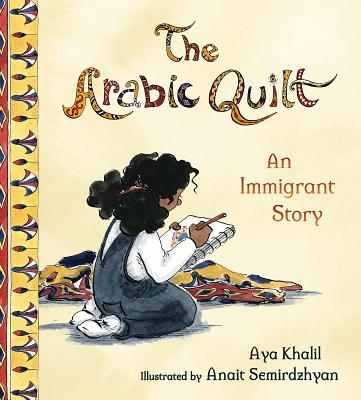
The Arabic Quilt: An Immigrant Story by Aya Khalil, illustrated by Anait Semirdzhyan
The Arabic Quilt is an essential addition to your diverse, anti-bias bookshelf. Kanzi and her family recently immigrated from Egypt and Kanji is nervous about being different from her classmates. However, a class project involving a paper collage quilt of students’ names written in Arabic provides a catalyst for all the students to learn about the importance of valuing diversity and different languages. Lovely, heartwarming and uplifting.



Stacie Walton says
Jelani Memory is a man. you used the pronoun "she" when discussing his book. Am I missing something? Or was it a major microaggression?
Erica says
Sometimes a typo is just a typo. I've made them before, and sadly, I'll make them again.